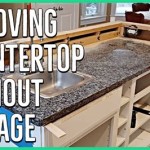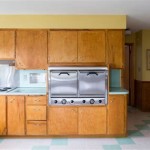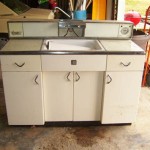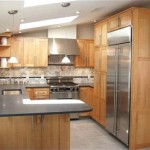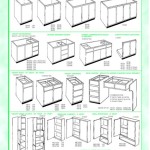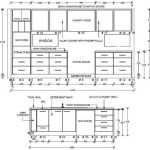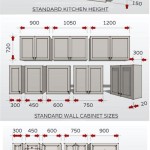Affordable Custom Kitchen Cabinets: Balancing Cost and Quality
The kitchen, often considered the heart of the home, plays a pivotal role in daily life. It is a space for meal preparation, family gatherings, and social interactions. Consequently, a functional and aesthetically pleasing kitchen is highly valued by homeowners. Kitchen cabinets form a significant component of both the functionality and appearance of this space. While stock cabinets offer a readily available and budget-friendly solution, they often lack the personalization and precise fit required for unique kitchen layouts and design preferences. Custom kitchen cabinets provide an alternative, but are often perceived as a costly investment. However, affordability and customization are not mutually exclusive. Understanding the factors influencing the price of custom cabinetry and exploring strategies to manage these costs can make custom solutions accessible to a wider range of homeowners.
The perceived high cost of custom kitchen cabinets stems from the nature of the bespoke design and construction process. Unlike mass-produced stock cabinets, custom cabinets are built to specific dimensions and design specifications. This necessitates individual consultation, detailed planning, and skilled craftsmanship. The choice of materials, the complexity of the design, and the level of detail all contribute to the final price. However, a well-planned approach to custom cabinet design and selection can significantly mitigate these costs without compromising quality and functionality.
Understanding the Cost Drivers of Custom Kitchen Cabinets
Several factors contribute to the overall cost of custom kitchen cabinets. Recognizing these elements allows homeowners to make informed decisions and prioritize spending based on their individual needs and budget.
Material Selection: The type of wood or material used for the cabinet boxes, doors, and drawer fronts is a primary determinant of price. Solid hardwoods like cherry, maple, and oak are generally more expensive than engineered wood products like plywood and MDF (Medium-Density Fiberboard). While hardwoods offer superior durability and aesthetic appeal, high-quality plywood and MDF can provide excellent structural integrity and a smooth surface for painting or finishing. Choosing less expensive wood species, such as birch or poplar, and strategically using MDF for certain components can reduce material costs. Laminates and thermofoils are also cost-effective alternatives for door and drawer fronts, offering a wide range of colors and textures.
Cabinet Construction: The method of cabinet construction also impacts the price. Framed cabinets, with a face frame attached to the cabinet box, are a traditional and often less expensive option. Frameless cabinets, also known as European-style cabinets, feature a sleeker, more modern look, but typically require more precise construction and stronger materials, which can increase costs. The joinery methods used to assemble the cabinets, such as dovetail joints, mortise-and-tenon joints, or simpler screw-and-glue construction, also influence the price. Dovetail joints, known for their strength and durability, are more labor-intensive to create and therefore more expensive than simpler joinery methods.
Design Complexity: Intricate door styles, decorative moldings, and specialized storage solutions add to the cost of custom cabinets. Simple, clean lines and minimalist designs are generally more affordable. Opting for standard door styles, such as Shaker or flat-panel doors, can significantly reduce costs compared to more elaborate designs with raised panels or intricate carvings. Minimizing the use of decorative moldings and focusing on functional storage solutions, such as pull-out shelves or drawer organizers, can also help control costs.
Hardware Selection: Cabinet hardware, including knobs, pulls, hinges, and drawer slides, can significantly impact the overall cost. High-end, designer hardware can be quite expensive, while more basic options offer a cost-effective alternative. Choosing standard hardware finishes, such as brushed nickel or oil-rubbed bronze, can also help save money. Selecting soft-close hinges and drawer slides, while adding a slight premium, can improve the functionality and longevity of the cabinets, making it a worthwhile investment in the long run.
Finishing and Installation: The type of finish applied to the cabinets, whether paint, stain, or a combination of both, also affects the price. Multiple coats of paint or a complex staining process require more time and labor, increasing costs. A clear coat finish over natural wood can be a more economical option. Professional installation is typically recommended for custom cabinets to ensure proper alignment and functionality. However, homeowners with experience in carpentry may be able to handle the installation themselves, saving on labor costs.
Strategies for Achieving Affordable Custom Kitchen Cabinets
While the upfront cost of custom kitchen cabinets may seem daunting, several strategies can be employed to make them more affordable without sacrificing quality and desired design elements.
Prioritize and Plan: The first step in achieving affordable custom kitchen cabinets is careful planning and prioritization. Clearly defining the needs, wants, and budget constraints is crucial. Identify the most important aspects of the new kitchen, such as improved storage, enhanced functionality, or a specific aesthetic style. This allows for focused spending on key areas and the potential for cost savings in less critical areas. A detailed kitchen layout and design plan, including precise measurements and specifications, will minimize errors and unexpected costs during the construction process.
Explore Material Alternatives: As previously mentioned, material selection significantly impacts the cost of custom cabinets. Explore alternative materials that offer similar aesthetics and functionality at a lower price point. For example, consider using plywood or MDF for the cabinet boxes and solid wood for the door frames. Laminates and thermofoils offer a wide range of colors and textures at a fraction of the cost of solid wood. These materials are also durable and easy to clean, making them a practical choice for kitchen cabinets.
Simplify Design and Construction: Opting for simpler designs and construction methods can significantly reduce the cost of custom cabinets. Choose standard door styles, such as Shaker or flat-panel doors, over more elaborate designs. Minimize the use of decorative moldings and focus on functional storage solutions. Framed cabinets are generally less expensive than frameless cabinets. Consider using simpler joinery methods, such as screw-and-glue construction, for the cabinet boxes. A minimalist design approach can not only save money but also create a clean, modern look.
Consider Semi-Custom Options: Semi-custom cabinets offer a blend of stock and custom features. They come in standard sizes and configurations but allow for some customization options, such as door styles, finishes, and hardware. Semi-custom cabinets can be a more affordable alternative to fully custom cabinets while still providing a degree of personalization.
Shop Around and Compare Quotes: Obtaining multiple quotes from different cabinet makers is essential to ensure a competitive price. Compare not only the price but also the quality of materials, construction methods, and the level of service offered. Ask for detailed breakdowns of the costs to understand where the money is being spent. Be sure to check references and read online reviews to assess the reputation and reliability of the cabinet makers. Local cabinet makers may offer more competitive pricing than larger national companies, due to lower overhead costs.
DIY Where Possible: For homeowners with experience in carpentry and home improvement, some aspects of the custom cabinet project can be handled independently. This could include demolition of existing cabinets, painting or staining the cabinets, or installing the hardware. However, it is important to accurately assess skill level and be realistic about the time commitment involved. Improper installation can lead to functional problems and damage to the cabinets, so professional installation is often recommended for the cabinet boxes themselves.
Phase the Project: If budget constraints are a significant concern, consider phasing the kitchen renovation project. Start with the most critical aspects, such as replacing old or damaged cabinets, and postpone less essential elements, such as adding decorative features or specialized storage solutions, for a later phase. This allows for spreading the cost over a longer period of time and prioritizing spending based on immediate needs.
Maintaining Affordability Without Sacrificing Quality
The goal is to achieve affordable custom kitchen cabinets without compromising the quality and durability of the finished product. Strategic decisions and the selection of appropriate materials and construction techniques can ensure that the cabinets provide long-lasting functionality and aesthetic appeal.
Focus on Durable Materials: Even when opting for less expensive materials, prioritize durability and longevity. High-quality plywood and MDF, when properly sealed and finished, can provide excellent structural integrity and resistance to moisture. Choose durable hardware that can withstand daily use. Consider investing in soft-close hinges and drawer slides, which can extend the lifespan of the cabinets by reducing wear and tear.
Proper Installation is Key: Professional installation is crucial for ensuring that custom cabinets are properly aligned and function correctly. Improperly installed cabinets can lead to uneven doors, drawers that don't close properly, and structural instability. While DIY installation may seem like a cost-saving measure, it is often worth the investment to hire a qualified professional to ensure a flawless installation.
Regular Maintenance and Care: Proper maintenance and care can extend the lifespan of custom kitchen cabinets and prevent costly repairs. Clean the cabinets regularly with a mild detergent and water. Avoid using abrasive cleaners or harsh chemicals that can damage the finish. Protect the cabinets from excessive moisture and humidity. Promptly repair any minor damage, such as scratches or chips, to prevent further deterioration.
Consider Long-Term Value: While the initial cost of custom kitchen cabinets may be higher than stock cabinets, they offer long-term value in terms of improved functionality, enhanced aesthetics, and increased home value. A well-designed and properly installed custom kitchen can be a significant selling point when the time comes to sell the home. By carefully planning and prioritizing spending, homeowners can achieve affordable custom kitchen cabinets that provide years of enjoyment and add lasting value to their property.

Prima Affordable Modern Semi Custom Solid Wood Kitchen Cabinets China Made In Com

How To Get A Stunning Kitchen On Budget

The Complete Resource For Mdf Kitchen Cabinets

Affordable Cabinets Of Fort Myers

The Best Inexpensive Kitchen Cabinets 2024

Get The Most Affordable Premium Kitchen Cabinets

7 Ways To Make Your Kitchen Cabinets Look Expensive

Affordable Modern Custom Made White Modular Lacquer Kitchen Cabinet China Cabinets Kitchens In Com

Whole Cabinets Custom Kitchen Factory Direct Discount

10 Ways To Design A Custom Kitchen On Budget The Ginger Home
Related Posts

